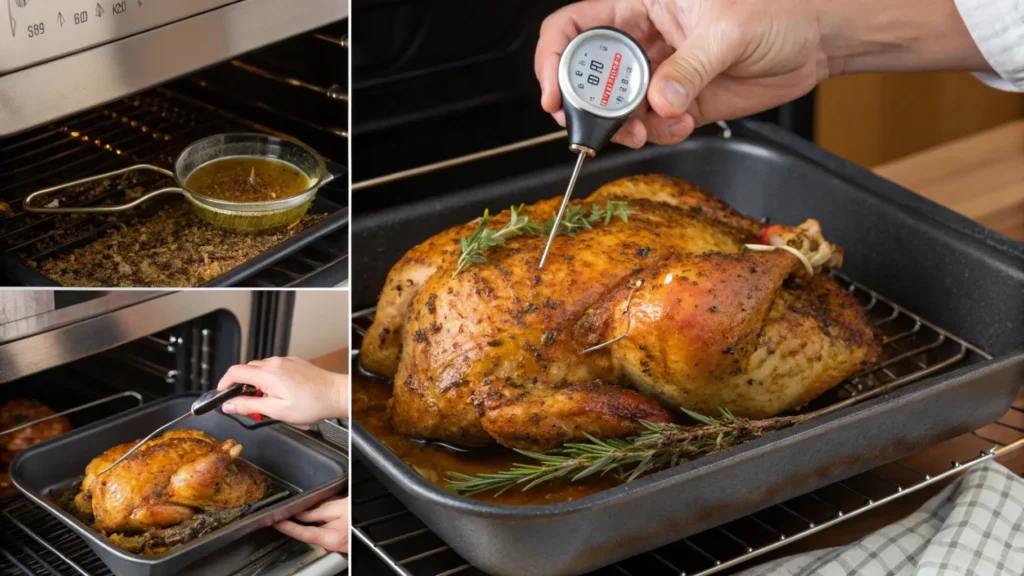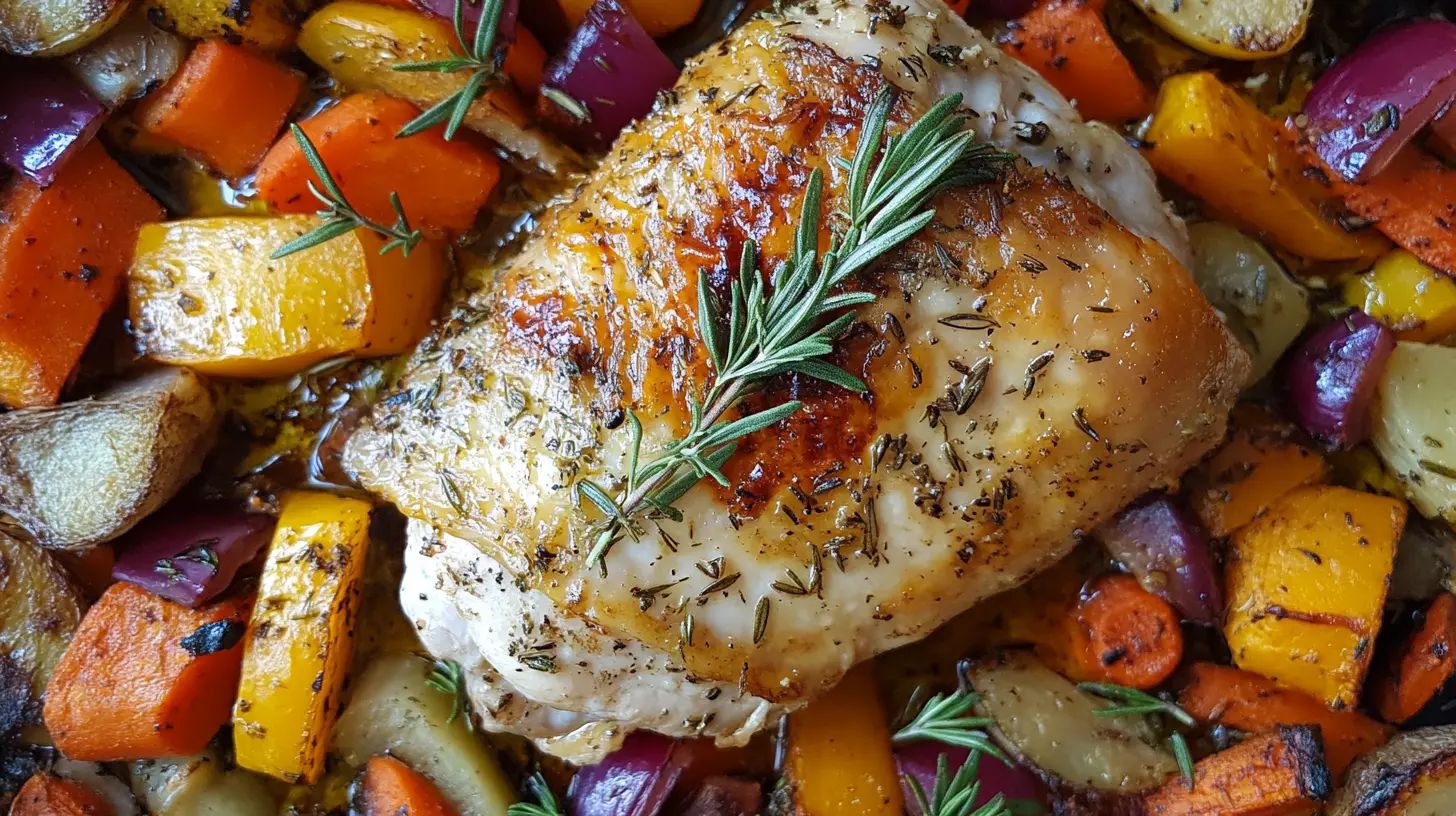Cooking a large piece of chicken might seem like a daunting task, but with the right techniques and a little know-how, it’s surprisingly simple. Whether you’re preparing a whole chicken, a bone-in thigh, or a thick breast, achieving juicy, evenly cooked meat is within reach. This guide will teach you how to cook a big piece of chicken? by exploring the best methods for preparation, seasoning, and cooking. Let’s dive into the secrets of making tender, flavorful chicken every time.
Understanding Chicken Cuts for Cooking Large Pieces
Different Chicken Cuts and Their Cooking Challenges
Not all chicken cuts are created equal, especially when it comes to size and cooking requirements. Understanding the type of chicken cut you’re working with is essential for success. For instance, a whole chicken takes longer to cook and requires even heat distribution. On the other hand, large cuts like bone-in thighs or split breasts need precise handling to retain their moisture.
Each cut presents its own challenges. Whole chickens often dry out if overcooked, while large breasts can become tough if not prepared correctly. Bone-in cuts, though flavorful, require longer cooking times to ensure the meat near the bone is fully cooked.
Choosing the Right Cut for Your Recipe
Selecting the right chicken cut depends on your cooking method and the dish you’re aiming for. Roasting is ideal for whole chickens, while grilling works better for thick, juicy thighs or drumsticks. For baked recipes, consider bone-in breasts, which hold moisture better than boneless ones.
If you’re just learning how to cook a big piece of chicken?, start with a manageable cut like split breasts or thighs. These are forgiving and versatile, giving you room to perfect your technique without worrying about uneven cooking or dryness.
Preparing a Big Piece of Chicken
Thawing Chicken Safely for Even Cooking
One of the first steps in how to cook a big piece of chicken? is ensuring it’s properly thawed. Cooking chicken that’s still partially frozen can lead to uneven results, with the outer layers overcooked and the inside underdone. Always thaw large chicken pieces in the refrigerator overnight. This method keeps the chicken at a safe temperature while gradually defrosting it.
If you’re in a pinch, you can use a cold water bath. Place the chicken in a sealed plastic bag and submerge it in cold water, changing the water every 30 minutes. Avoid thawing chicken at room temperature, as this increases the risk of bacterial growth.
How to Properly Season and Marinate Large Chicken Pieces
Seasoning is key to transforming a plain piece of chicken into something flavorful and memorable. For larger cuts, don’t be shy with the seasoning. Use a mix of salt, pepper, and your favorite herbs or spices, ensuring you coat the chicken evenly. Seasoning both the exterior and under the skin helps distribute flavor.
Marinating is another excellent way to enhance large chicken pieces. A marinade with a balance of acid (like lemon juice or vinegar), oil, and seasonings breaks down proteins, making the chicken tender and juicy. Allow the chicken to marinate for at least 30 minutes, though overnight is ideal for maximum flavor absorption.
Cooking Methods for Large Chicken Pieces

Roasting: A Foolproof Method for Even Cooking
Roasting is one of the best techniques for how to cook a big piece of chicken?. Start by preheating your oven to 375°F (190°C). Place the chicken on a roasting rack or baking sheet to allow heat to circulate evenly. For added flavor, stuff the cavity of a whole chicken with aromatics like garlic, lemon, and herbs.
Baste the chicken periodically with its own juices or a butter mixture to keep the meat moist. Use a meat thermometer to check the thickest part of the chicken—it should reach an internal temperature of 165°F (74°C) for safe consumption.
Grilling Tips for Large Chicken Cuts
Grilling large chicken pieces requires patience and technique. Start by preheating the grill and oiling the grates to prevent sticking. For thick cuts like bone-in thighs or breasts, use indirect heat by placing the chicken on the cooler side of the grill. This allows the meat to cook through without burning the exterior.
Flip the chicken occasionally and brush it with a marinade or basting sauce to enhance flavor. To finish, move the chicken to direct heat for a few minutes to achieve a nice char. Always rest the chicken for 5–10 minutes before slicing to lock in the juices.
Healthy Ways to Cook Large Chicken Pieces
Low-Fat Cooking Techniques for Big Chicken Cuts
When considering how to cook a big piece of chicken?, health-conscious cooking methods are a great way to enjoy flavorful meals without excess fat. Baking is an excellent option for minimizing added fats. Preheat your oven to 375°F (190°C), season the chicken with herbs and spices, and bake on a rack to allow fat to drip away. Using a foil tent during the first half of baking keeps the meat juicy while maintaining lower fat content.
Another method is steaming, which preserves moisture without requiring oil or butter. Use a steamer basket and cook the chicken over simmering water, infusing it with the natural flavors of herbs and aromatics added to the water.
Adding Flavor Without Excess Oil or Butter
You don’t need heavy sauces or large amounts of oil to make chicken taste amazing. Marinades made from citrus juices, vinegar, or low-fat yogurt add depth to the meat while keeping it lean. For an extra punch of flavor, use dry rubs with spices like paprika, garlic powder, and cayenne.
Adding fresh ingredients like sliced lemon, rosemary, or garlic to the cooking process enhances the natural taste of the chicken. You can also try basting the chicken with a broth-based mixture during cooking for added moisture and flavor.
Avoiding Common Mistakes in Cooking Large Chicken Pieces
How Overcrowding and High Heat Ruin Chicken
One common pitfall when learning how to cook a big piece of chicken? is overcrowding the pan or baking tray. When pieces are too close together, they release steam, leading to uneven cooking and soggy results. Always leave enough space between pieces to allow heat to circulate properly.
Another mistake is cooking chicken on excessively high heat. While high temperatures can create a quick sear, they often dry out the interior of thick chicken cuts. Opt for moderate, steady heat to ensure even cooking without sacrificing juiciness.
Why Resting Chicken is Essential for Juiciness
Skipping the resting period after cooking is a rookie mistake that can lead to dry meat. Resting allows the juices to redistribute throughout the chicken, ensuring every bite is moist and flavorful. For large pieces, rest the chicken for 10–15 minutes under a loose foil tent before slicing.
This simple yet crucial step ensures the chicken retains its juiciness and elevates the final dish. For more techniques to perfect your chicken, check out the Longhorn Parmesan Crusted Chicken Recipe.
Storing and Reheating Leftovers Safely
Proper Storage Techniques to Retain Freshness
After learning how to cook a big piece of chicken?, proper storage ensures that your efforts don’t go to waste. To keep chicken fresh, transfer it to an airtight container within two hours of cooking. Refrigerate cooked chicken at or below 40°F (4°C) to prevent bacterial growth. For longer storage, freezing is a great option—wrap the chicken tightly in plastic wrap or foil before placing it in a freezer-safe bag.
Label containers with the date to keep track of freshness. Refrigerated chicken is best consumed within 3–4 days, while frozen chicken can last up to 4 months without losing quality. Proper storage not only maintains flavor but also prevents food waste.
How to Reheat Chicken Without Drying It Out
Reheating large chicken pieces can be tricky, but the key is to add moisture. If using the oven, cover the chicken with foil and add a splash of chicken broth or water to the dish. Heat at 300°F (150°C) until warmed through. For stovetop reheating, place the chicken in a pan with a small amount of liquid, cover it, and heat gently over low heat.
Avoid microwaving chicken on high power, as it can dry out quickly. Instead, use short bursts at medium power, flipping the chicken halfway through. These methods ensure your leftovers are just as juicy and flavorful as when they were first cooked.
FAQs About Cooking a Big Piece of Chicken
How Long Does a Big Piece of Chicken Take to Cook?
Cooking time depends on the size and cut of the chicken. For a whole chicken, roasting at 375°F (190°C) takes about 20 minutes per pound. Large bone-in pieces like thighs or breasts usually require 35–45 minutes at the same temperature. Always use a meat thermometer to confirm the internal temperature has reached 165°F (74°C).
Is It Better to Cook Chicken at 350°F or 400°F?
Both temperatures have their advantages, but the best choice depends on your desired outcome. Cooking at 350°F ensures slow, even cooking, ideal for retaining moisture in large pieces. On the other hand, 400°F helps achieve crispy skin faster but requires careful monitoring to prevent overcooking.
How Do You Prevent Chicken From Drying Out?
To keep chicken moist, always season it generously and consider using a marinade or brine beforehand. During cooking, baste the chicken with its own juices or a mixture of butter and broth. Resting the chicken after cooking is also essential to prevent juices from escaping when sliced. These simple steps ensure your chicken stays tender and juicy.
Conclusion: Mastering the Art of Cooking Large Chicken Pieces
Cooking a large piece of chicken doesn’t have to be intimidating. By following the right techniques, from proper preparation and seasoning to selecting the best cooking methods, you can create flavorful and juicy chicken every time. Understanding the nuances of how to cook a big piece of chicken? ensures that you achieve even cooking, prevent dryness, and maximize flavor.
Remember, key steps like thawing safely, using a meat thermometer, and allowing the chicken to rest after cooking make a big difference. Whether you’re roasting, grilling, or slow-cooking, attention to detail elevates your dish from ordinary to exceptional.
Finally, don’t overlook storage and reheating tips for leftovers—they’ll keep your hard work from going to waste. With practice and patience, you’ll perfect the art of cooking large chicken pieces and impress your family and guests with delicious, chef-quality results.

